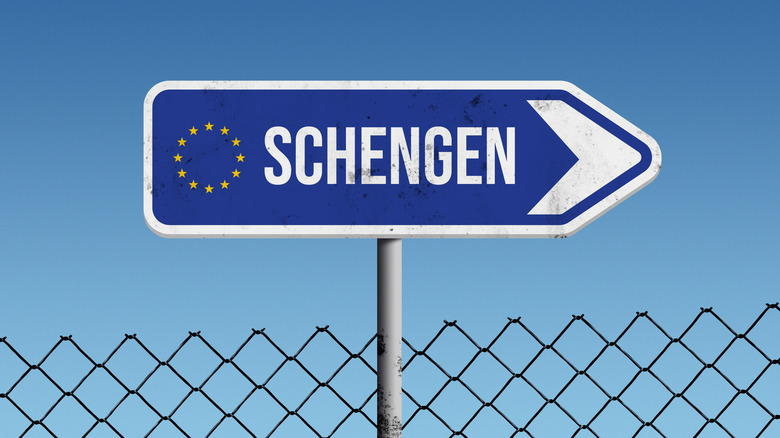What You Need To Know About Visiting Europe's Schengen Area And Visa
If you're planning a trip across the pond, you might be wondering whether Americans need a visa to travel to Europe or how long you can visit without overstaying your welcome. When conducting your research, it's also helpful to understand the Schengen Area, which plays a major role in how travel works across Europe.
The Schengen Area is a zone made up of 29 European countries, allowing both European and non-European travelers to move freely between member states without internal border controls. Established by the Schengen Agreement in 1985 and named after a village in Luxembourg where the treaty was signed, the zone was designed to simplify travel for tourists, exchange students, and business travelers throughout much of Europe. Of the 29 countries in the Schengen Area, 25 are part of the European Union, like Belgium, France, Germany, Luxembourg, and the Netherlands, while four are not part of the EU — Iceland, Norway, Switzerland, and Liechtenstein. Furthermore, there are also EU countries that are not part of the Schengen Area, such as Ireland and Cyprus, which enforce their own border control polices and visas, so it's important not to get the European Union and the Schengen Area mixed up.
Still with us? In simple terms, not all countries in Europe participate in the Schengen Area, but those that do make it easy to travel to and fro without passport control. But what about visas? While there are many nationalities allowed to enter the Schengen Area without a visa, such as the United States, Australia, and the United Kingdom, there are 103 countries around the world where citizens require a Schengen visa to travel freely throughout this zone. Therefore, travelers should check the specific requirements for certain nationalities upon entering Schengen countries.
What are the benefits of the Schengen Area?
The establishment of the Schengen Area offers many advantages, with 3.5 million tourists and commuters benefiting from this system daily. The border-free arrangement allows for ease of travel, minimizes paperwork, and offers tourists more time to enjoy their trip rather than wait in line at passport control. Once you've been granted legal entry into a Schengen country, you're free to roam throughout the entire zone without needing an additional visa or facing border checks between member states at airports, train stations, or on the roads if traveling by car.
According to VisaGuide.World, over 40 million travelers visited Europe from the U.S. in 2024, highlighting the continent's popularity as a top travel destination. One of the biggest draws is the ease of exploring multiple countries in a single trip — thanks to Europe's compact geography, convenient travel systems, and border-free travel within the Schengen Area. There are many ways to explore the continent, from Europe's surprisingly affordable Flixbus to the legendary Eurail Pass that is comparable to Amtrak's USA rail. So, whether by bus, train, car, or plane, there are many budget-friendly and convenient options for traveling to different Schengen countries.
Whether you're exempt from a Schengen visa or required to obtain one, you are permitted to enter the Schengen zone for a short stay of 90 days within a 180-day period, aka the "90/180-day rule." Penalties for breaking the 90/180-day rule include deportation, a ban, a fine, or issues re-entering the Schengen Area. Download the Schengen Simple app to track the countries visited and ensure you don't overstay your visit.

